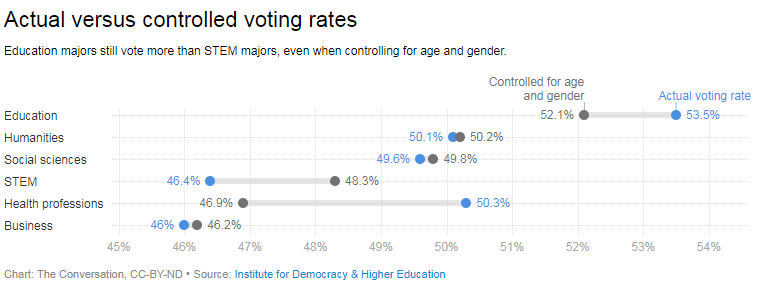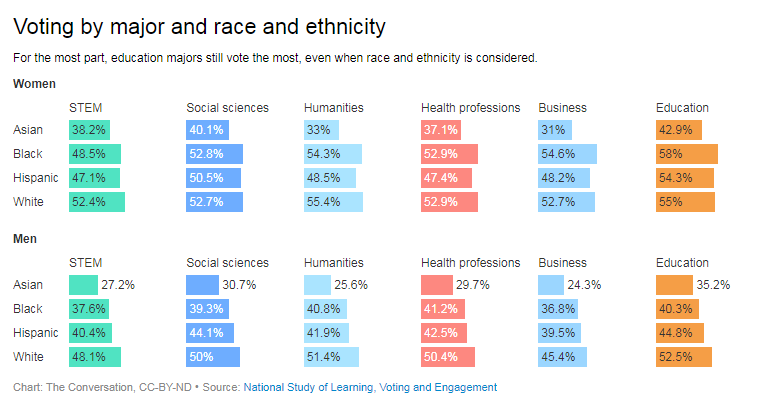We live and work in settings that are diverse but unequal. Opportunities and outcomes can often be predicted on the basis of race/ethnicity, culture and religion, gender and sexual orientation, and class background. In these settings, we communicate constantly. Some of our communications are blatantly inappropriate, threatening the recipients or intentionally and obviously making them feel unwelcome and inferior. Some are acceptable or even helpful. And in between, some are arguably problematic. They are being called “microaggressions“–“aggressions,” because they are wrong; and “micro-” because they are not blatantly or clearly objectionable when taken one at a time.
One problem with them is that they may combine with many similar statements to create an overall environment that prevents people from flourishing and succeeding. Another problem is that they are simply unethical. Even if a given aggression contributes no harm at all, it is not what a person should say to another person.
Our culture is uncomfortable with ethical distinctions. Even children are taught that ethical claims are opinions in contrast to facts. We are quick to see explicitly ethical claims as subjective and biased. To criticize another person’s expression on ethical grounds seems arrogant, judgmental, and a possible threat to liberty.
In contrast, two major forms of reasoning are confident and widely viewed as legitimate: science and law. So there is a constant temptation to convert an ethical discussion about what is right into a science-like or law-like analysis.
For instance, in Aeon recently, the psychology professor Scott O Lilienfeld wrote that all policies and programs that target microagressions
hinge on one overarching assumption: that the microaggression research programme aimed at documenting the phenomenon is sound, and that the concept itself has withstood rigorous scientific scrutiny. This is not the case. Microaggressions have not been defined with nearly enough clarity and consensus to allow rigorous scientific investigation. No one has shown that they are interpreted negatively by all or even most minority groups. No one has demonstrated that they reflect implicit prejudice or aggression. And no one has shown that microaggressions exert an adverse impact on mental health.
Lilienfeld concludes, “Until the evidence is in …, I recommend abandoning the term microaggression, which is potentially misleading. In addition, I call for a moratorium on microaggression training programmes and publicly distributed microaggression lists now widespread in the college and business worlds.”
I agree that it would be useful to know more about the consequences of definable categories of communication. The consequences of any form of speech will vary depending on the situation, the speaker, the recipient, etc. There won’t be one empirical finding about microagressions, but there may be many useful findings.
Still, note the assumptions that underlie this call for a scientific approach:
- A given act (in this case, a speech-act) should be criticized if, and only if, it causes a measurable harm. Moral philosophers would call this assumption “consequentialism.”
- Categories of behavior can be usefully abstracted from contexts and defined with necessary and sufficient conditions. This reasoning uses what Jonathan Dancy [in Moral Reasons, 1993, p. 65] calls “switching arguments”–arguments that isolate a given feature of a situation and assume that if it has a moral significance in its original context, it must have the same significance when the context is “switched” to another one.
These are controversial positions. Kantians, virtue-ethicists, and others dispute consequentialism for various reasons, holding that an act can be right or wrong regardless of its causal impact. And particularists deny the validity of “switching arguments,” on the basis that a given feature can change its moral significance depending on the context. They criticize what Alfred North Whitehead called the “fallacy of misplaced concreteness.”
I don’t want to litigate those debates here, but merely to suggest that a scientific investigation of microaggressions makes strong assumptions about what should matter ethically. Those assumptions violate many ordinary people’s intuitions and ways of reasoning about what is right.
Meanwhile, legalistic reasoning influences the discourse of microaggressions. It’s not that critics want to make these acts literally illegal, but they introduce legal-sounding analysis. A microaggression deserves some kind of disciplinary intervention–perhaps not a punishment, but at least an authoritative statement that the speech is inappropriate in its context. A teacher or other authority figure who fails to intervene can be held responsible for creating a hostile environment.
But disciplinary responses threaten other values: freedom of speech, diversity of opinion, authentic expression of privately held views, and freedom from arbitrary judgments. Jesse Singal thinks that “microaggressions are being defined so broadly and so subjectively that students who are exposed to them are likely to come away very, very confused about what constitutes acceptable speech on campus — and campus disciplinary systems could get seriously gummed up in the years to come.” Thus we feel the pressure to introduce regular rules and policies that strike the appropriate balance and are predictable. Rule by people is to be replaced by rule of law.
Jürgen Habermas laments the tendency to “juridify” or “judicialize” what he calls the “Lifeworld.” For instance, when well-intentioned governments seek to protect pupils and parents against unfairness in testing and discipline, he writes, fairness “is gained at the cost of a judicialization and bureaucratization that penetrates deep into the teaching and learning process,” depersonalizing the school, inhibiting innovation, and undermining relationships [Theory of Communicative Action, vol. 2, p. 371.] Habermas reads the New Social Movements that have arisen since the 1970s–both on the right and the left–as efforts to protect the authenticity of the everyday Lifeworld from both the market and the intrusive welfare-state. It is an ironic outcome when these movements ultimately “juridify” such contexts as classrooms by turning ethical judgments into legalistic arguments. For example, some people cut their teeth in liberatory social movements but end up as diversity & inclusion specialists inside institutions, writing empirical papers (science) and establishing policies (law).
I am inclined to agree with Habermas that the underlying process is specialization. In large and technically complex modern societies, it pays to differentiate one’s expertise and authority. Constantly increasing specialization is thus a fundamental process of modernity. [Ibid. p. 374]. Science and law are two categories of specialization, each endlessly ramifying into sub-specialties. They seek legitimacy and often obtain it. Lilienfeld’s review of psychological research is an example of a scientist asserting authority on the basis of expertise.
Science and law are sometimes in tension. Behavioral scientists may argue that laws lack empirical basis; lawyers may block empirically justifiable rules on constitutional grounds. But these two systems also easily interlock. For instance, both disciplines need to categorize behavior and draw causal implications.
Science and law offer important checks on the kinds of judgments that we may reach intuitively in ordinary life. When we assert that a given statement has (or does not have) effects on specific individuals, that is a causal claim that must stand up to scientific scrutiny. When we make a judgment about an individual’s speech, we should check it against general principles that would block favoritism and arbitrariness.
But these two limited forms of reasoning can distort or block ethical judgment–as when Lilienfeld uses the lack of scientific evidence to support a “moratorium” on the use of the word “microagression,” even though that is ultimately an ethical category. The imposition of law and science can overwhelm the following values:
- Responsibility: We are obligated to make judgments about speech, our own and others’. We can’t offload responsibility onto bureaucratic or scientific systems.
- Judgment and discretion: There is no algorithm that can settle subtle cases. It is up to the moral agent to decide, under circumstances of uncertainty and moral ambiguity. Discretion cuts two ways, sometimes requiring us to excuse behavior that violates policies or that has negative effects, and sometimes requiring us to condemn behavior that is allowable and inconsequential.
- Holism: Good judgment requires concern for the whole individual, the whole situation, and the whole community.
- Relationships: Ultimately, what matters are relationships among differently situated human beings. Relationships are affective as well as rational, embodied as well as communicative, implicit as well as explicit, and prolonged over time.
See also: morality in psychotherapy; insanity and evil: two paradigms; protecting authentic human interaction; is all truth scientific truth?; free speech at a university; and don’t confuse bias and judgment.


